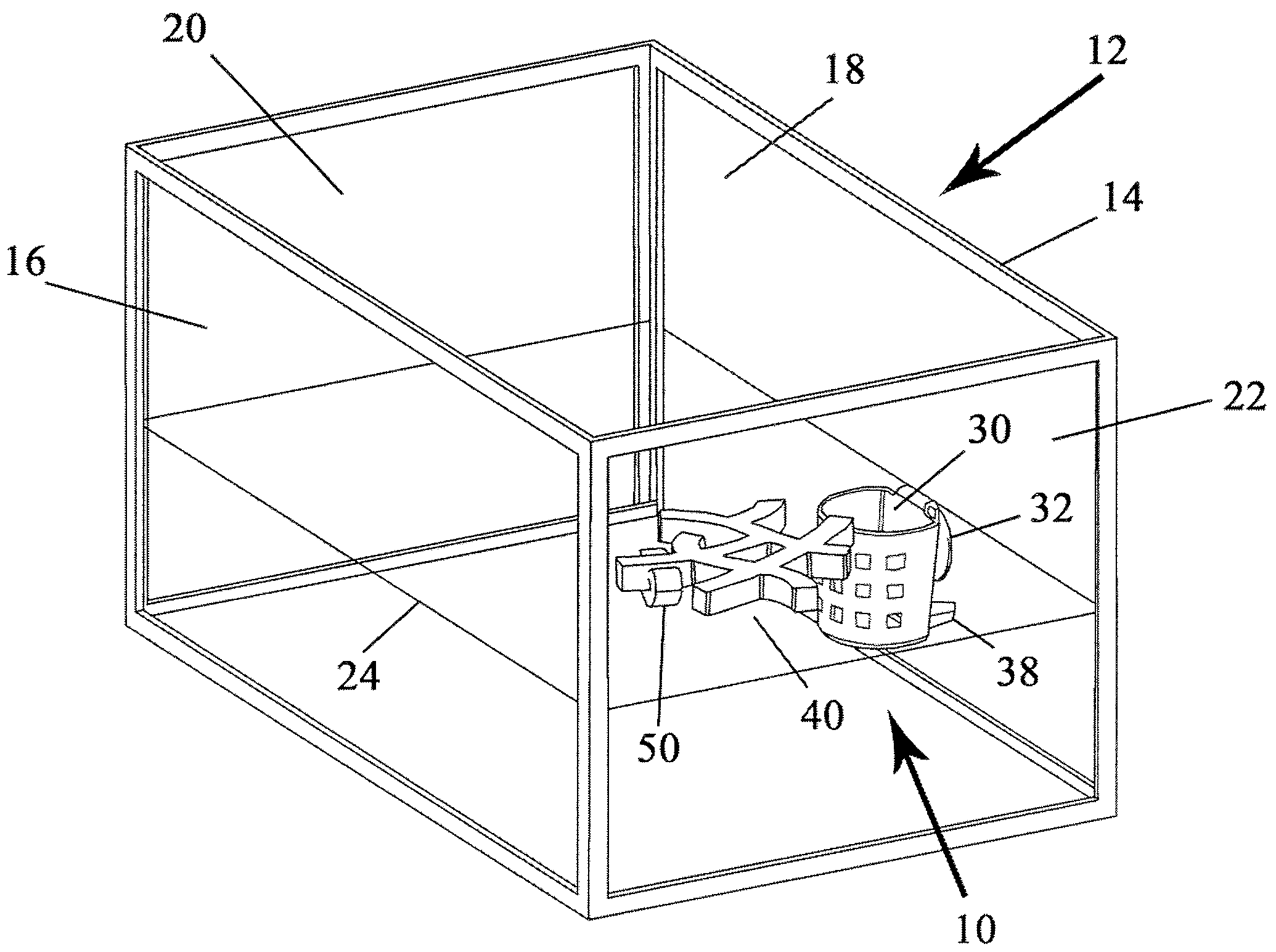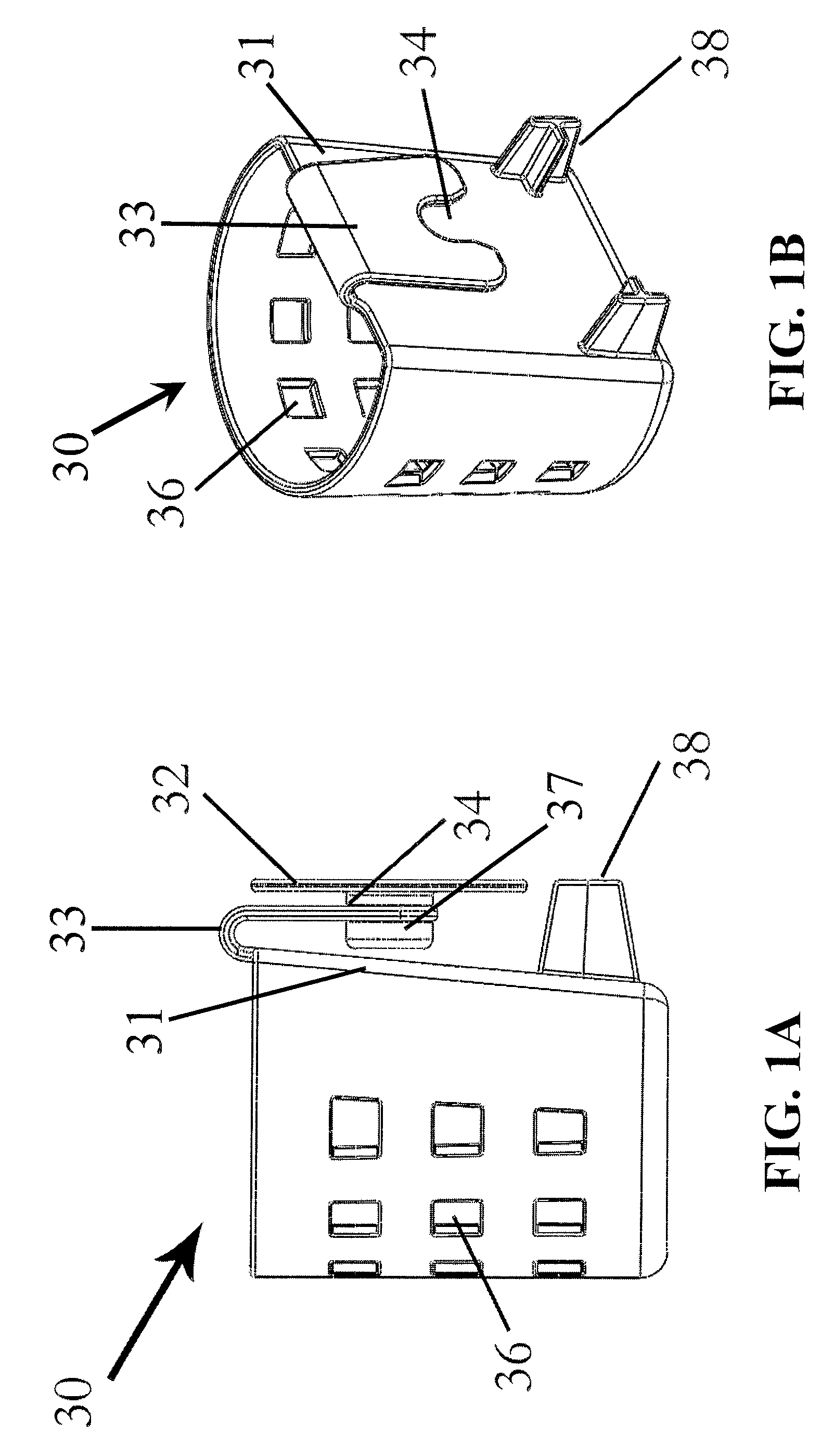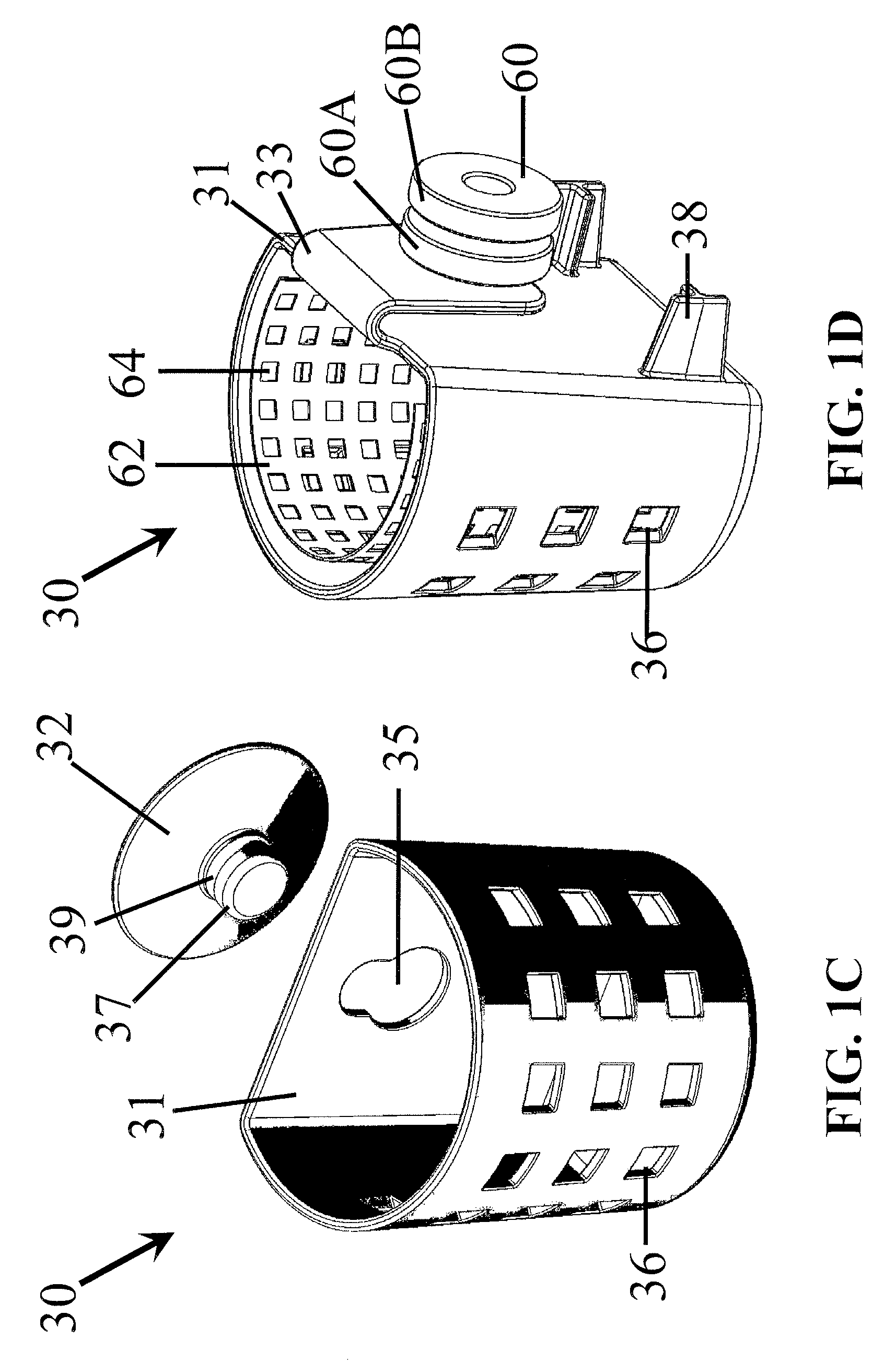Marginals aquarium plant system
a plant system and aquarium technology, applied in the field of marginal plants in aquariums, can solve the problems of large pond baskets and aquarium-specific devices, plant death, and support not being suitable for marginal plants, and achieve the effect of greater flexibility in livestock selection
- Summary
- Abstract
- Description
- Claims
- Application Information
AI Technical Summary
Benefits of technology
Problems solved by technology
Method used
Image
Examples
Embodiment Construction
[0044]FIGS. 1A-1D show various planters 30 of the present invention. The planter 30 is preferably made of clear, injection-molded polystyrene plastic but may be made of any other material with the ability to maintain structural integrity in water over periods of time. These materials may include other plastics, metals, organic-based materials, or mixtures thereof. The clear plastic is preferred as it is visually unobtrusive, but the planter 30 may be any color, especially those that blend-in with the design of the aquarium in which it is used.
[0045]The planter includes openings 36 in its sides to permit water movement. The openings 36 also permit plant roots to escape into the aquarium water, which helps to obscure the planter 30 from view, creates habitat for aquarium animals, and provides plants with greater access to nutrients.
[0046]The planter further includes a mounting device for mounting on a vertical surface, such as the side of an aquarium (FIG. 4A-5C). The mounting device ...
PUM
 Login to View More
Login to View More Abstract
Description
Claims
Application Information
 Login to View More
Login to View More - R&D
- Intellectual Property
- Life Sciences
- Materials
- Tech Scout
- Unparalleled Data Quality
- Higher Quality Content
- 60% Fewer Hallucinations
Browse by: Latest US Patents, China's latest patents, Technical Efficacy Thesaurus, Application Domain, Technology Topic, Popular Technical Reports.
© 2025 PatSnap. All rights reserved.Legal|Privacy policy|Modern Slavery Act Transparency Statement|Sitemap|About US| Contact US: help@patsnap.com



